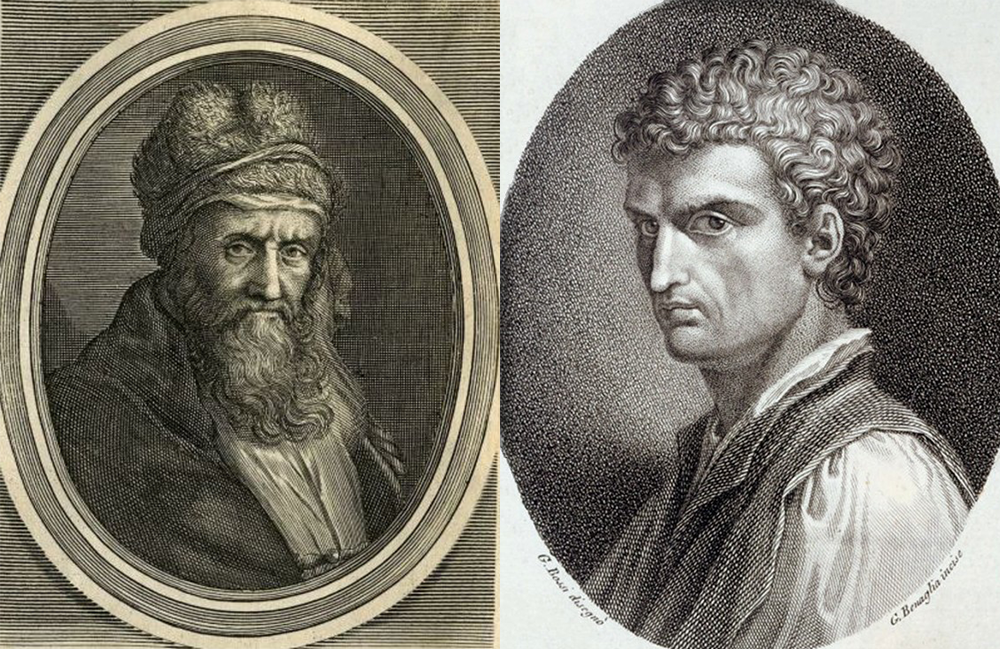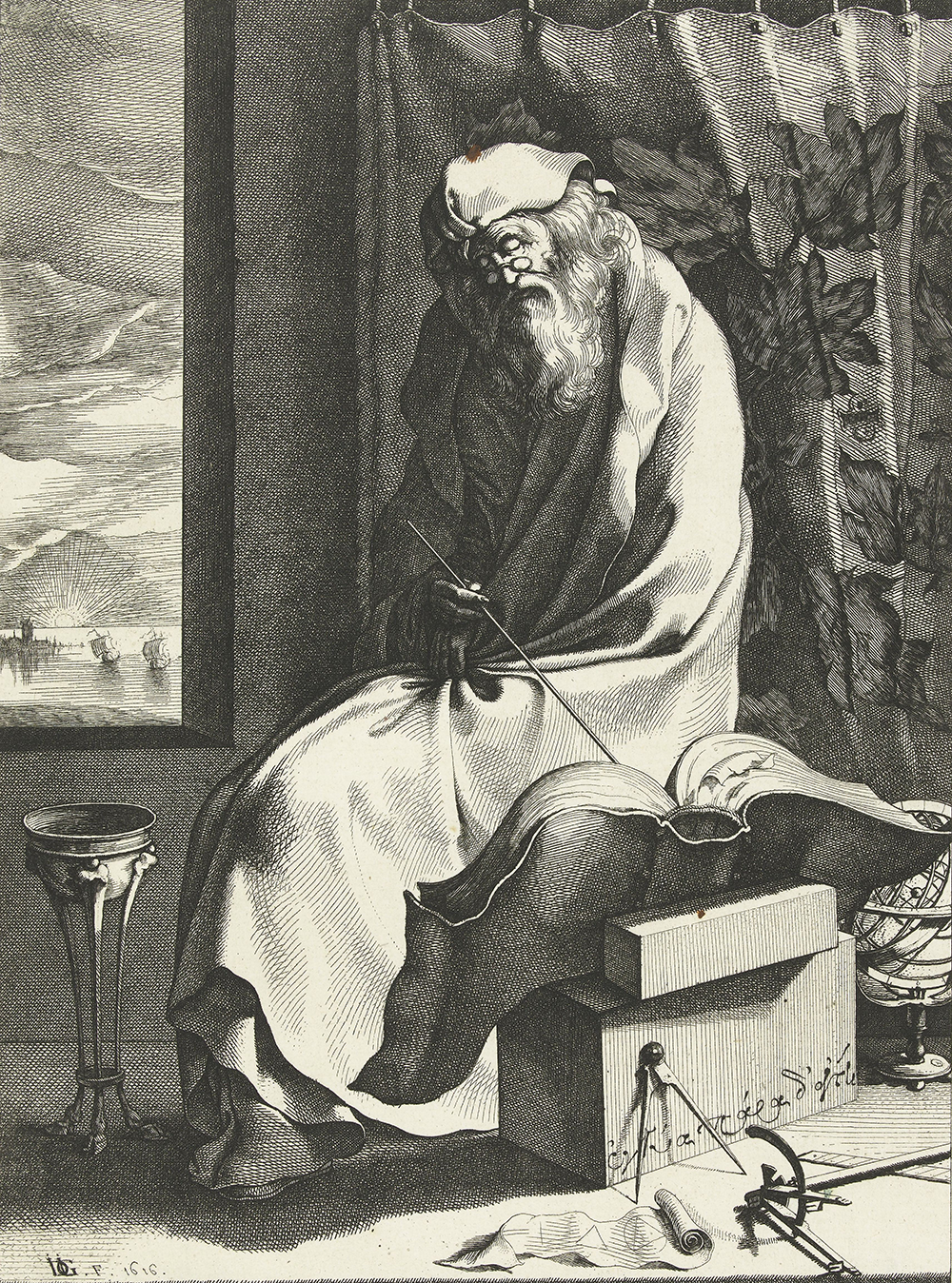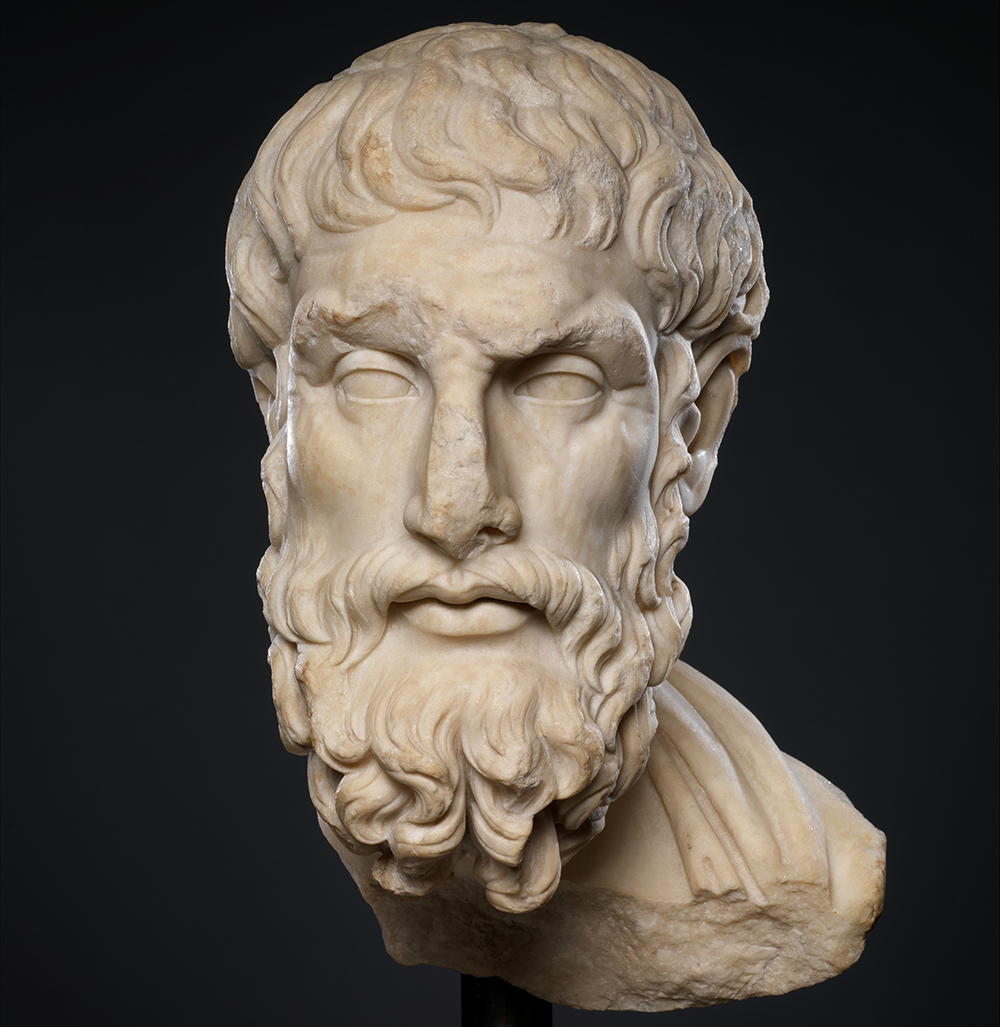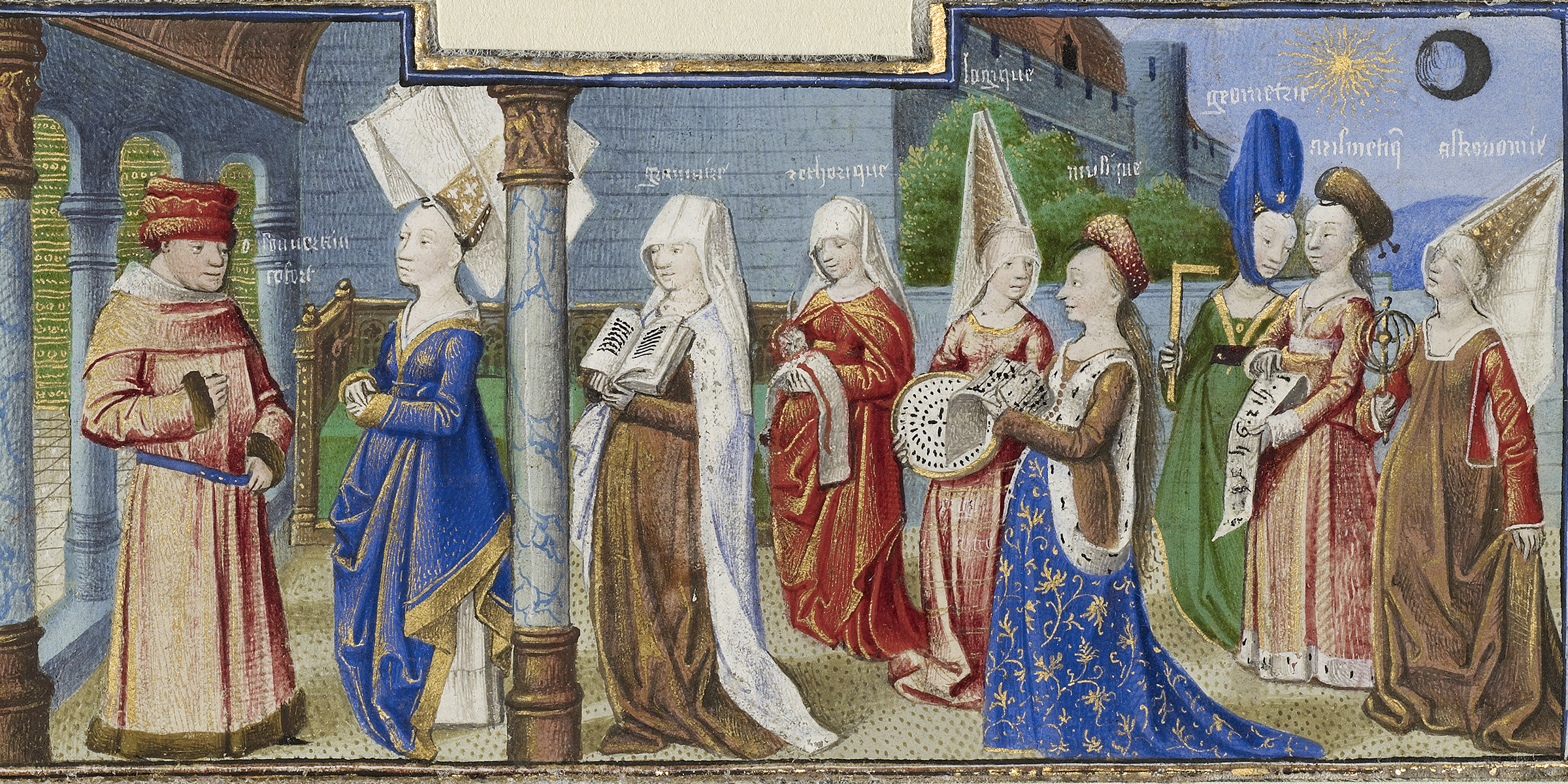In sixteenth-century Italy, flamboyant men wrote spectacular autobiographies. Benvenuto Cellini described his success at everything from dueling in the streets of Rome and shooting enemy leaders from the battlements of the Castel Sant’Angelo in 1527 to creating a bronze statue of Perseus and Medusa that electrified even the critical inhabitants of Florence. Girolamo Cardano told the story not only of his brilliant career as mathematician and medical man, but also of the rich dream life that had sometimes predicted his accomplishments—and sometimes simply mystified him. Both were frank: Cellini narrated a sadomasochistic love affair with a model in graphic detail, and Cardano described his sexual impotence, his carelessness in important matters, and his silly walk as vividly as his algebraic discoveries.
But the wildest of all Renaissance autobiographies was written long before either of these men was born. In 1441 Leon Battista Alberti was a youngish writer whose accomplishments had not yet made him famous. Born in 1404, the illegitimate offspring of a rich Florentine family that had been exiled for political reasons, he joined the papal Curia as a secretary and accompanied Pope Eugene IV back to Florence. There he wrote a long series of highly original books: a treatise on the new Florentine painting of the 1420s and 1430s, dialogues on the new world of the merchant family, and the first grammar of Italian. But while Alberti made a modest splash in the piranha pool of Florentine intellectual life, he also found himself attacked from many sides. A poetry contest that he organized fizzled out, and he often found himself musing, angry and sad, at the injuries his enemies had inflicted on him. In this context, Alberti set out to avenge himself by describing his character, his accomplishments, and his way of life with unforgettable brio.

The Autobiography—written anonymously, in the third person—is a wild text, swarming with contradictions. Alberti describes himself as intensely active, buzzing with physical and mental energy: he could jump over the head of a man standing next to him, he threw a coin so high that it rang as it struck the ceiling of the Florentine cathedral, and he explored the arts and crafts with passion and energy. He mastered music without a teacher and made social life itself into an art—especially walking in public, riding a horse, and speaking. But he was also a neurasthenic invalid who suffered from vertigo and tinnitus, starved himself into ill health, and experienced dreadful visions of scorpions while reading. Easy and articulate, he seemed gay and lovable even when the most serious discussions were under way—but would fall into reveries even in company, and become taciturn and aloof. For all his originality and productivity as a writer, he tore himself apart when he saw fields of flowers in the spring, denouncing his own failure to be fertile. The sovereign urban intellectual was at once a hero and a victim, a master of the crowd’s applause who was always in search of a cork-lined room.
Alberti followed a model as he crafted this astounding anatomy of his own character. Diogenes Laertius, whose Lives of the Eminent Philosophers he was one of the first modern Westerners to read, showed him how to present his own life dramatically and effectively. Like Diogenes’ life of Thales, the first Ionian philosopher, Alberti’s autobiographical work was divided into two sections: an account of his character, as revealed through both his accomplishments and stories about him, and a collection of witty sayings. Both anecdotes and witticisms suggest how much Alberti learned from his ancient model.
Thales—according to Diogenes—was a polymath who studied politics, nature, and pretty much everything else. So was Alberti. Thales had no teacher. Neither did Alberti. Thales proved the value of the study of nature by predicting that an especially good olive harvest would take place. He rented all the olive presses and then profited from his prescience. Alberti also described himself as a lover and student of nature. Above all, Thales, like Alberti, was a creature of paradox. He used his knowledge of nature to become rich. But he also fell into a ditch while out at night to observe the stars—whereupon the old woman who was his guide mocked him for trying to understand the heavens when he could not see what was in front of him.
The sayings of Thales that filled the second part of the Life were as provocative as they were short: “[Thales] said that there was no difference between life and death. ‘Why, then,’ someone asked, ‘do you not die?’ ‘Because,’ he replied, ‘it makes no difference.’” Alberti’s sayings—which echoed those of Thales in a craftily allusive way—were also charged with tough-minded wit: “Asked what would be the biggest of all things among mortals, he answered, ‘Hope.’ As to the smallest, he said, ‘The difference between a man and a corpse.’” For Alberti, in short, Diogenes’ book was irresistibly exciting: a lifeline in his hour of intellectual need. It gave him a model for imagining and narrating the life of a new kind of thinker, a secular intellectual, to use an anachronistic but not inappropriate term, who lived out his life not in the seclusion of a monastery but as a walker in the city.

Nowadays, Diogenes Laertius seems an unlikely character to attract a reader as exacting as Alberti. His work—compiled in the third century—comprises ten books, which offer both biographies of ancient philosophers and doxographies, or collections of their opinions. Diogenes was not interested in the thinkers of his own day—such as the public professors of Platonic and other schools of philosophy, whom Marcus Aurelius had appointed. Rather, he covered the period from the sixth to the third century BC—basically, from Thales to Epicurus—with a few excursions into the second century. Diogenes drew his material from a vast range of sources, many of which no longer survive, whose authors and titles he cited in exuberant and sometimes untrustworthy profusion. He used them to compose surveys of what he described as the major schools and practitioners of Greek philosophy—the Ionian and Italic sects, Plato and Aristotle and their followers, the Stoics, Skeptics, and Epicureans. Though he offered accounts of both his subjects’ thought and their lives, he made no effort to connect them, much less to use the larger contexts within which different schools of philosophy had taken shape to explain the differences in their views. Often dismissed with contempt in modern times as a derivative and untrustworthy source of curious but pointless anecdotes—such as the story that Zeno liked green figs—his book struck chords in many serious scholars and thinkers in the past. He and it have come to be appreciated in new ways in recent scholarship.
The path from Diogenes to Alberti was anything but direct. Later Greek scholars occasionally read—and mined—the Lives. Some forty Greek manuscripts of the work survive. But Diogenes’ book first found really curious readers in the twelfth century. The learned clerics of Latin Europe were at work rediscovering the riches of Greek philosophy—especially, but by no means only, the works of Aristotle, which had been preserved in Arabic translations and widely studied in the Islamic world. These swarmed with references to ancient philosophers whose works did not survive—figures like Pythagoras and his followers, whose obsession with numbers Aristotle criticized, and Plato, whose pupil Aristotle had been. In parts of the West—especially Sicily and southern Italy—Greek remained a living language. Scholarly circles in the Byzantine Empire continued to copy and study the Greek classics. Erudite Latins used their mastery of Greek to hunt for more texts and information. In the first half of the twelfth century, a Calabrian cleric named Henricus Aristippus, who traveled to Constantinople, translated Plato’s Phaedo and Meno from the Greek. He knew the work of Diogenes and in the 1150s he translated it.
Aristippus’ version found readers. Sometime before the 1320s, another Italian drew on it to create a compendium titled On the Lives and Conduct of the Philosophers. Wrongly ascribed to an influential philosopher, Walter of Burley, this paraphrase attained massive popularity: more than 270 manuscripts survive. It gave Western readers their first introduction to the lives and thought of philosophers outside the university canon. Pseudo-Burley did not simply translate what he found. Diogenes’ life of Pythagoras, for example, emphasized both his achievements in mathematics and his wisdom as a sage who taught his followers how to pursue virtue. Diogenes also identified Pythagoras as the head of a coherent school—the Italian school that had developed alongside the Ionian tradition founded by Thales. Pseudo-Burley abbreviated what he found in Diogenes to a bare report that Pythagoras had been a sage in both mathematics and ethics. Then he added material from other sources. He reported that Plato had based his account of the cosmos and Boethius his works on mathematics on Pythagoras, and that Augustine ascribed the invention of the word philosophy itself to him—though he also associated him with necromancy. In Pseudo-Burley’s account, Pythagoras—and the other Greek sages who made an appearance—looked rather like the great scholastic philosophers of the thirteenth century and after, such as Albertus Magnus and Pseudo-Burley himself: wise, learned, sometimes more given to speculation about occult arts than was quite healthy. But that made his work all the more useful. Mendicant friars composing sermons and vernacular writers telling stories drew on his rich stores of material. Thanks to Pseudo-Burley, ancient thinkers long forgotten peopled the pages of late medieval texts of every kind.
For all Pseudo-Burley’s popularity, his unsystematic book soon proved unsatisfying—especially to the humanists, the new breed of scholars that sprang up in late-fourteenth- and fifteenth-century Italy. These humanists disliked nothing more than the anachronistic way in which a learned medieval like Burley depicted the ancient past, presenting Greek philosophers as if they had been medieval savants and magicians rather than the independent-minded teachers of equally independent-minded pupils, who freely contradicted them. The humanists devoted themselves to finding and mastering as many ancient texts as they could—especially literary texts, which they valued for their beauty as well as their content. The humanists began with Latin. But the Latin writers they knew best, above all Cicero, reported that they themselves had gone to the Greeks to seek wisdom. They also suggested that the Greek philosophers had combined wisdom with eloquence—powerful language that could actually persuade readers and hearers to accept a writer’s theses. The works of Aristotle—systematic treatises, carefully rendered into Latin from literal translations into Arabic—were hard to read and harder to love. (His dialogues were lost, something that Renaissance scholars did not at first realize.) By contrast, the humanists now read Plato, who had offered an alternate form of philosophy, couched in language of the greatest beauty and power. Other Greek philosophers—Stoics and Epicureans, Cynics and Skeptics—also cropped up in Cicero and Seneca. In the decades just before and after 1400, Italian scholars searched for Plato and his many fellow Greek philosophers. They studied the Greek language, both in Florence—where a distinguished Byzantine scholar, Manuel Chrysoloras, taught for three years—and in Constantinople. And they began to translate the Greek classics, slowly at first, into more or less readable Latin.

One Florentine scholar in particular, Niccolò Niccoli, played a special role in the fortunes of Diogenes Laertius. An antiquary and collector whose library included some eight hundred manuscripts at his death, Niccoli did his best to live in the antique world that he loved better than his own. He ate off crystal plates, filled his house with fragments of ancient sculpture, and chastised his contemporaries, who asked him to correct their Latin writings, telling them that their work belonged in the outhouse rather than the library. What obsessed him most, however, were libraries: his own, and the older Christian ones that contained forgotten treasures. He read every ancient text to which he gained access with an eye to references to other texts he had not yet seen. He gathered every indication he could about the books still lurking in monastic libraries. And he dispatched eager young friends to find, copy, borrow, or steal every new text they could. Niccoli—who did much to shape the fifteenth-century revival of antiquity—clearly saw the potential value of the Lives. Diogenes Laertius was both a rich source of the information Niccoli craved and a guide for further searches.
Early in the 1420s, Niccoli and Cosimo de’ Medici, the latter already a patron of letters, urged a Camaldolensian monk of their acquaintance, Ambrogio Traversari, to translate the full text of Diogenes Laertius into Latin. Traversari, a profoundly pious man, resisted their request. He wanted to translate the Greek Church fathers rather than pagans. Even when he began work, the task proved harder than his sponsors had suggested. The text was difficult and corrupt, so Traversari looked for better manuscripts. He found the technical terms that filled Diogenes’ work bewildering, since he himself had never studied formal philosophy. Diogenes’ verse epigrams bewildered him, and though a scholar of more literary tastes, Francesco Filelfo, promised to translate them, he failed to do so. Parts of Book 10, on Epicurus, the philosopher who had put the pursuit of pleasure at the core of his system, baffled Traversari completely. They presented ideas that had become completely unfamiliar to Western scholars. Only in 1433 did Traversari manage to present a manuscript of his complete translation to Cosimo.
Traversari did his best to convince himself, and others, that he was not doing something impious in loosing all this new material on Latin readers. He insisted, in his preface to the text, that the pagans whose lives and teachers Diogenes collected had had inklings of the truth:
In the writings of all the more notable philosophers, God, the heavens, the celestial bodies, and nature are truly and subtly discussed, and largely in agreement with Christian truth. Such singular effort of investigating truth, the work of such keen genius and constant study, did not deserve to be everywhere deprived of the fruit of its sweat. God permitted this so that the true faith might receive support and strength from their testimony as well.
Niccoli read and approved this preface for Traversari, to the translator’s gratification—even though Traversari insisted, in the end, on the difference between the “real virtue” of the Christians and the “shadowy image of virtue” presented by the pagan sages, a sentiment not exactly to the taste of the classicist Niccoli.
Traversari could put up all the warning signs he wanted. Diogenes remained, as he had seen, a dangerous writer, who could threaten to open up scary new perspectives on life, the universe, and everything else. Alberti, one of the first to read his new translation, found inspiration in it for an exercise in self-analysis that would have confirmed all the fears of the earlier man, had he lived to read it (Traversari died in 1439).
For Alberti, Diogenes offered a new model of what it meant to be a philosopher—a model that snugly fit his own urban life and secular concerns.
Excerpted from “Diogenes Laertius: From Inspiration to Annoyance and Back” by Anthony Grafton, in Lives of the Eminent Philosophers by Diogenes Laertius, translated by Pamela Mensch and edited by James Miller. Copyright © 2018 by Oxford University Press. All rights reserved.
